Being a large insect that is well-known for its buzzing song, cicadas can be found in many different parts of the world, be it rural or urban. Although there are specific predators that hunt these hemipterans, they are also consumed by domestic animals, including chickens.
Chickens can and will eat cicadas whenever these bugs can be found around them.
Dead or alive, cicadas are considered one of the most delicious treats for chickens. In this article, we will explore how to include cicadas in chickens’ diet and the benefits of these dark brown bugs.

Table of Contents
Safe Ways Of Feeding Cicadas To Chickens
If you raise chickens on your farm and they love eating cicadas, you don’t have to worry because these bugs are safe for these birds. Cicadas offer many nutrients and fibers.
Chickens will eat cicadas at any stage in their life. The best time to feed them to your chickens is when they have just molted.
This is because their new exoskeleton is still soft and tender, which would make them palatable and easy to digest by chickens.
If you find any freshly-shed exoskeletons around the trees on your farm, then look closely because most likely, you will find cicadas lurking around this area.
Another thing note to is that chickens will devour the cicadas in one bite. This could lead to choking and other digestive problems because these bugs are quite large in size.
The usual body length of a mature cicada could reach up to 2 inches and the nymph is around 1 inch long.
To be safe, watch how your chickens eat. If they peck and shred these bugs into small pieces, then there would be no problem. If they don’t, you can help by giving them cicadas that are smaller in size.
Aside from cicadas’ size, you shouldn’t spray the cicadas with bug spray or any pesticides. This could prevent the chickens from eating those bugs that are covered in poisonous chemicals.
Then, make sure your chickens have enough grit. This is because the wings of the cicadas are harder than the rest of their shells which could lead to digestion problems.
If possible, provide a bowl of poultry grit unless the chickens are able to find enough small stones. Also, be sure to provide them with enough clean water to help wash down these crunchy bugs.
Chickens can also eat cicadas shells. The discarded shells when cicadas molt are chitinous exoskeleton (large structural polysaccharides) that can’t be digested but are edible enough to provide fiber for the chickens.
Before reaching their molting stage, cicada nymphs emerge from the ground in the form of grubs with legs and soft shells, similar to dark brown beetles.
Then, their shell hardens as they crawl around before stopping when they find a suitable spot to molt. These shells or exoskeletons will detach from their back, looking like empty shells.
Finally, you have to monitor how many cicadas the chickens eat. In some cases, they might experience allergic reactions due to the properties of the cicadas shell that are able to accumulate mercury in a biological manner.
Taken in moderation, cicadas provide chickens with ample nutrients that they can’t get in other foods.
Nutritional Benefits Of Cicadas
Like any other edible insects, cicadas provide a few nutritional benefits when they are consumed directly. For instance, cicadas are high in protein and low in fat and carbohydrates.
It is estimated that cicadas contain around 43 grams of protein per serving. These bugs are great sources of protein because they contain all nine essential proteins in their flesh.
Moreover, they also are full of antioxidants that help in reducing inflammation of cells.
The exoskeleton of the cicadas is made from fibrous polysaccharides called chitin. Chitin act as a source of fiber.
It also helps in defending the body against certain parasitic infections. This is is because chitin and its derivative called chitosan possess properties that enhance the immune response of the body.
Other Types Of Bugs That Chicken Can Eat
There are other types of bugs that you can feed to your chickens to boost their appetite with a variety of foods. Most of these bugs can be grown or commonly found. This includes:
1. Stink Bugs
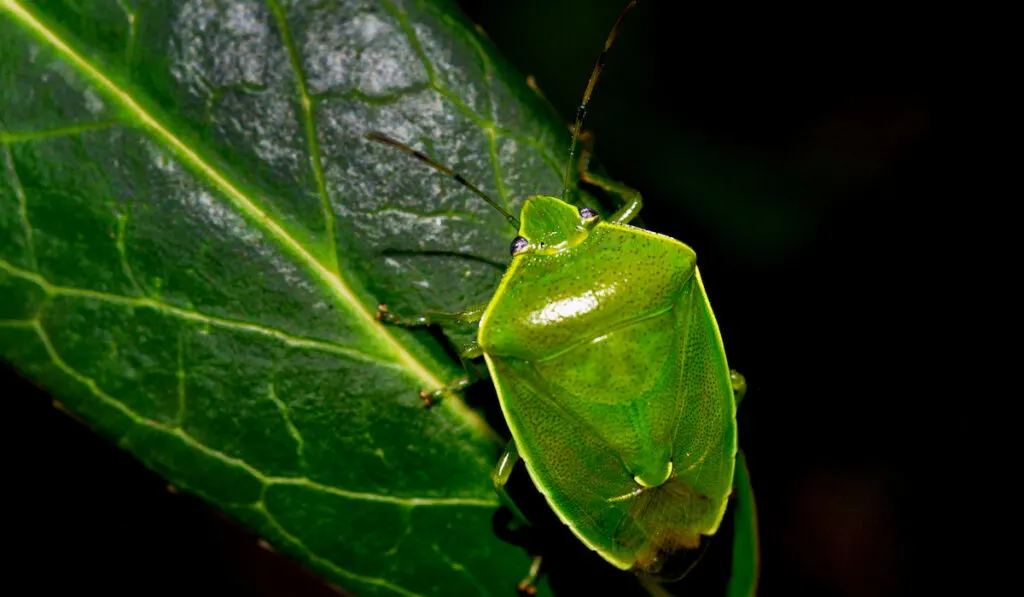
Also known as the Shield Bugs and Brown Marmorated Stink bugs, these triangle-shaped insects measure around 0.75 inches in length. These bugs feed on green leaves and plants and lay eggs on the underside of the leaves.
Stink bugs will release a stinky gas to protect themselves from predators, and this is also where they received their name. This gas isn’t toxic or poisonous.
So, any chickens that find these bugs on plants or the ground and eat them won’t likely experience digestive problems or poisoning issues.
2. Ladybugs
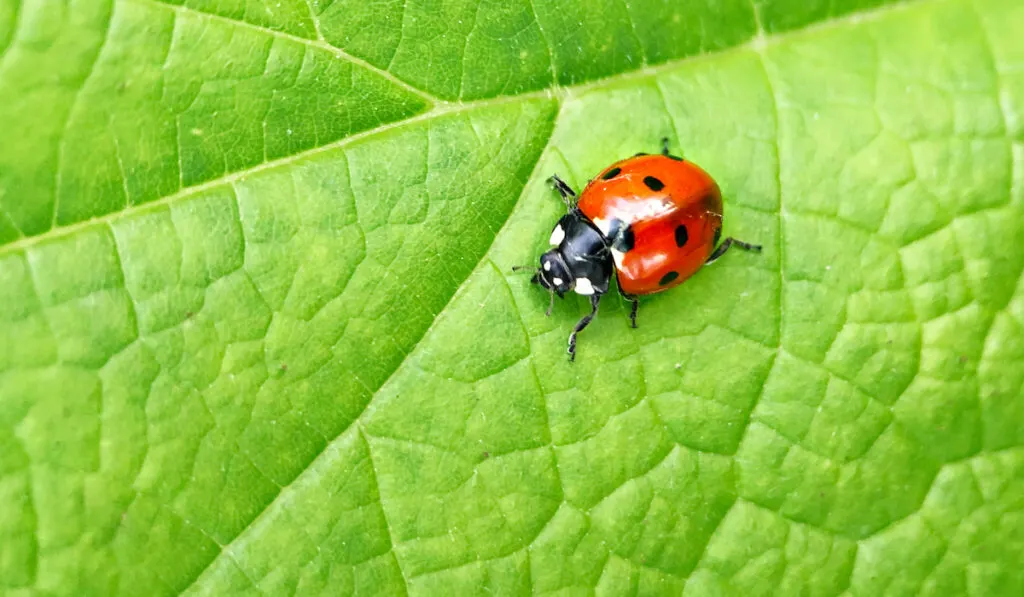
Ladybugs come in different shapes, sizes, and colors. In fact, there are about 5,000 species of ladybugs in this world. Chickens can and will eat ladybugs at any stage of their lives.
If you notice these little red and black beetles on flowers or any plant around your house, chances are, chickens will also notice them too. Ladybugs don’t carry any toxic, poisonous, or harmful microorganisms.
Although some species might produce foul-smelling gas as a part of their defense mechanism, still, they aren’t harmful to chickens.
3. Mealworms
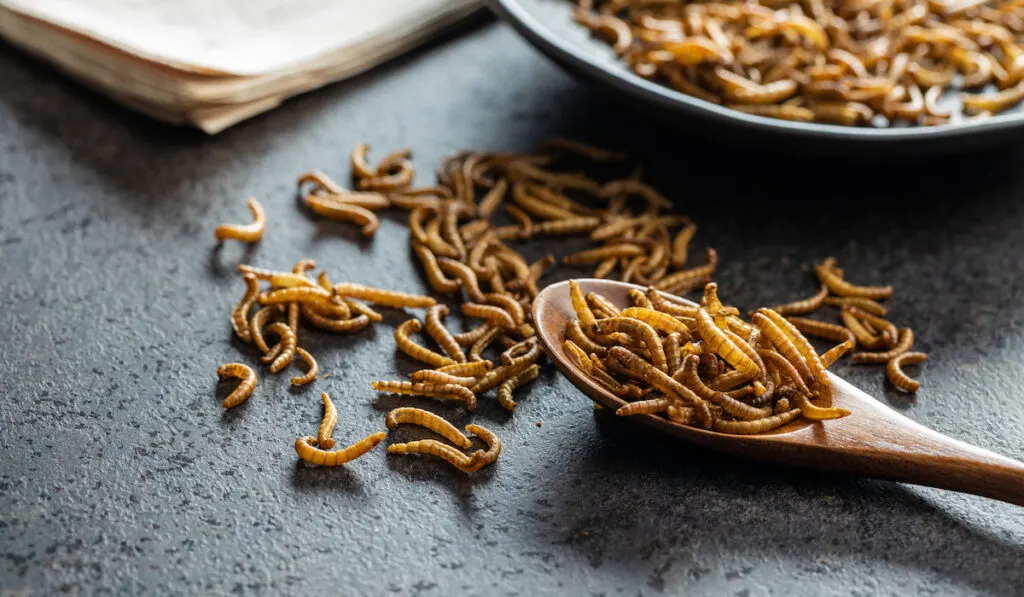
Chickens can eat mealworms at any stage of their life cycle. Dead or alive, mealworms are a great source of protein.
If you raise chickens on your farm and prefer not to buy too many things from the feed stores, you can raise mealworms as one of the supplemental diets for your chickens.
All you have to do is find substrates of milled grain like oatmeal, cornmeal, or wheat bran as their growing bin. Then, put the darkling beetles that would lay the eggs that will hatch into the mealworms.
It usually takes around 4 to 8 weeks before you see mealworms appear in the substrates. Then, they are ripe and ready to be fed to your chickens.
4. June Bugs
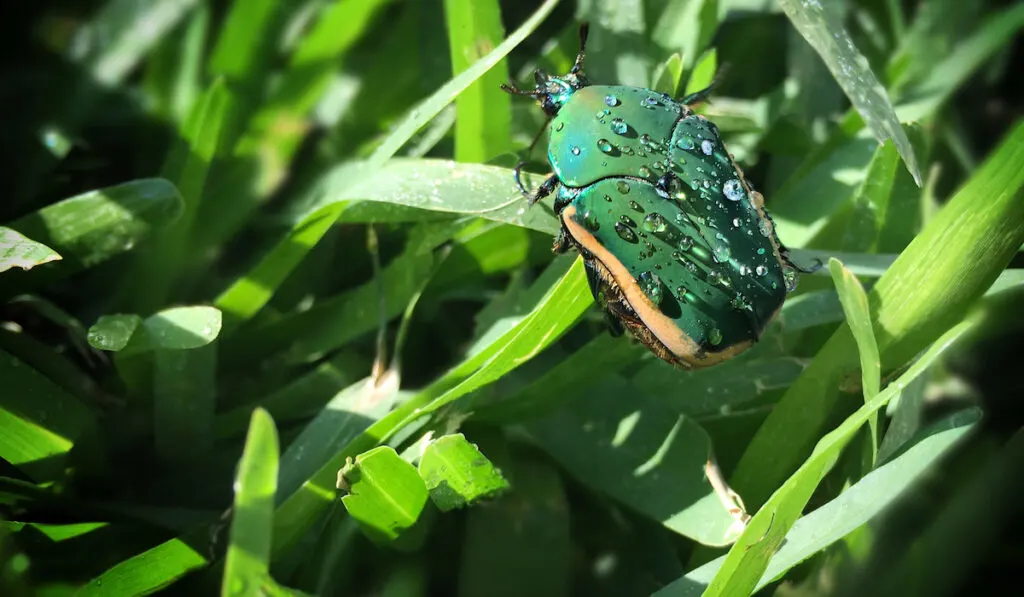
June bugs or June beetles are plant-eating insects with distinctive, shiny brown bodies that are typically found in Northern Hemisphere during spring and summer evenings. They are most active at night and mostly attracted to lights.
Some farmers considered them as pests because they feed on flowers of plants and foliage.
Chickens can and will eat these bugs because they aren’t harmful and are easy to digest.
If you want to catch June bugs, just fill a five-gallon bucket halfway with water. Then, place the bucket under any light source and leave it overnight. When you wake up the next morning, you should be able to find around 10 to 20 June bugs inside the bucket.
5. Maggots
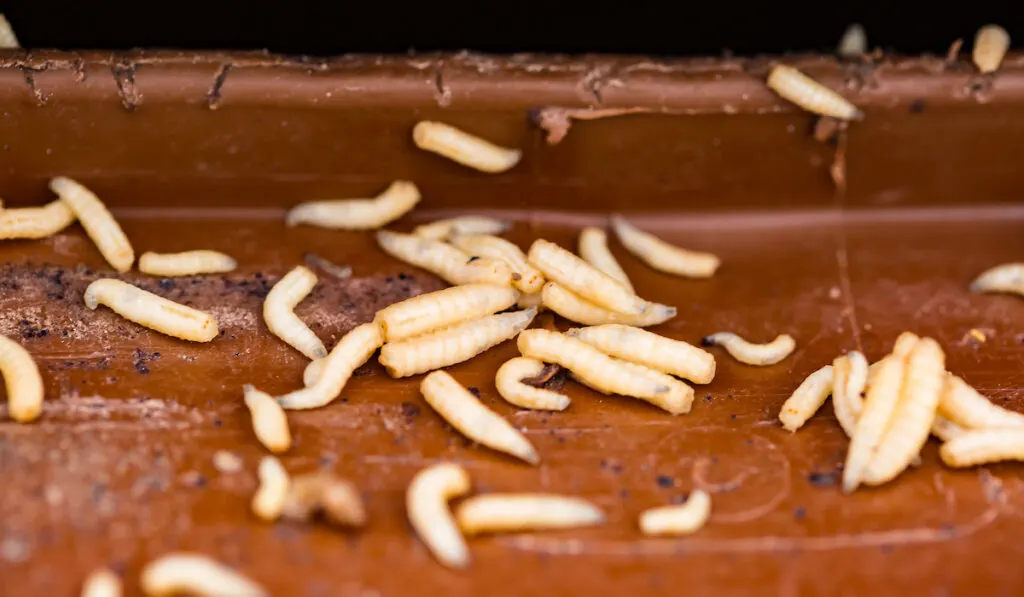
Like mealworms, maggots are also a great source of protein and chickens will love them. Maggots that are a smaller size can also be fed to chicks.
One of the easiest methods to grow your own maggots is by putting fresh meat or dead animals into a bucket. Then, when the flies come and lay eggs in that rotten flesh, maggots will come out of the hatched eggs.
Compared to mealworms, growing maggots is a lot cheaper because you don’t have to find any specific substrates for the flies to lay eggs.
6. Dubia Roaches

Chicken can also eat roaches. The best roaches you can give them are dubia roaches.
Dubia roaches are an excellent source of protein and they don’t stink like other wild roaches. They don’t run fast, which makes it easier for chickens to catch them.
To grow your own dubia roaches, find a container like a glass aquarium. Put something on top of the container as a protective lid that prevents them from climbing out.
Then, place egg cartons inside the container. This will give them privacy and enough room to run around and lay eggs.
Dubia roaches thrive optimally in a tropical-like environment. So, this container should also be kept under an optimum temperature of between 90 to 95 degrees Fahrenheit.
7. Crickets
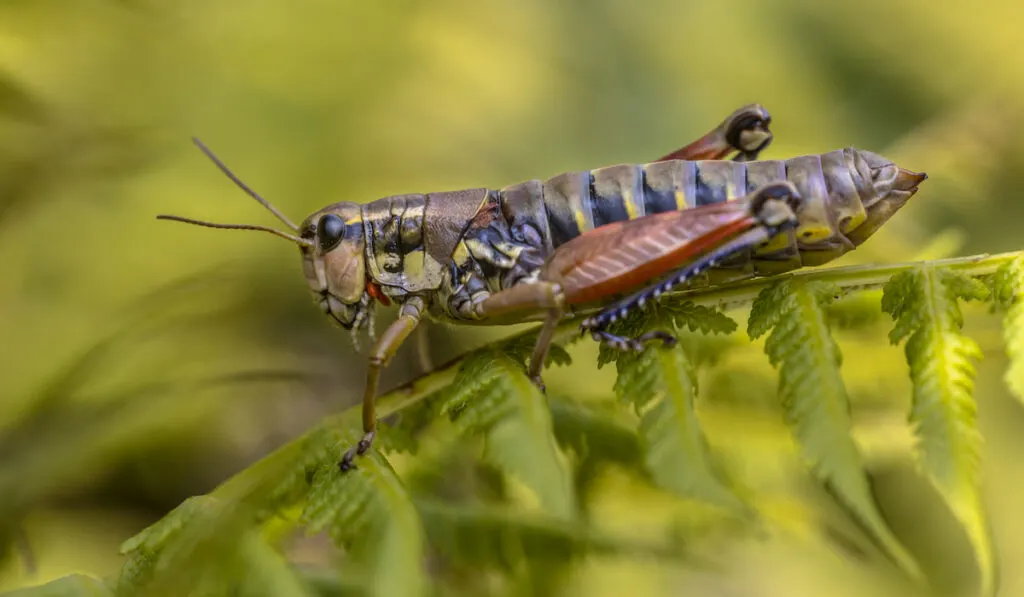
Chickens can and will eat crickets. Just like cicadas, crickets’ exoskeletons are made from chitin, which is a great source of fiber for these birds. They are also an excellent source of protein.
There are many species of crickets in this world, but the most common ones that can be found in the United States are Jerusalem crickets, Mormon crickets, Australian field crickets, camel crickets, and house crickets.
Just like dubia roaches, you can also use the same steps and grow your own crickets as one of the supplementary meals for your chickens.
One thing to avoid is feeding dead crickets that you found lying around your house. The uncertain cause of death of these insects could be caused by something hazardous like poisons or harmful microorganisms.
Final Thoughts
Above all, cicadas and other bugs can serve as one of the nutritious treats for chickens. It’s in their nature to eat any small critters that move. Chickens are efficient predators of insects and bugs.
Resources
- https://www.cicadamania.com/cicadas/are-cicadas-safe-to-eat/
- https://www.muranochickenfarm.com/2019/06/can-chickens-eat-cicadas.html
- https://www.insider.com/eating-cicada-health-risks-benefits-protein-2021-5
- https://www.reformstead.com/6_kinds_of_bugs_you_can_grow_for_your_flock_to_save_on_feed.html
- https://www.sciencedirect.com/science/article/pii/S2352364616300013
- https://chickenandchicksinfo.com/do-chickens-eat-stink-bugs/
- https://chickenandchicksinfo.com/do-chickens-eat-ladybugs/
- https://avianaquamiser.com/posts/feeding_june_bugs_to_chickens/
- https://chickenandchicksinfo.com/do-chickens-eat-maggots/
- https://www.backyardchickens.com/articles/raising-dubia-roaches-for-your-chickens.68036/
- https://chickenandchicksinfo.com/can-chickens-eat-crickets/
